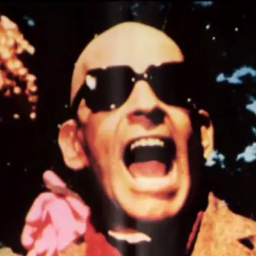- cross-posted to:
- michigan
- cross-posted to:
- michigan
cross-posted from: https://midwest.social/post/12955233
Dr Murad Jacob “Jack” Kevorkian died June 3, 2011 in Royal Oak, MI at the age of 83.
From the AP article…
On a video recorded by Kevorkian in 1993, Poenisch steadies Frederick’s Lou Gehrig’s disease-ravaged body as she signs a form requesting help to die “in the most humane, rapid and painless manner” possible. Then, [Carol] Poenisch reads words just penned by her mother [Kevorkian patient, Merian Frederick] that convey her final, fervent, wish: “My tears should not be taken as an indication that I am in doubt.”
The videotaped interview, clinically labeled “Medicide: File 8,” is one of many in a new archive at Kevorkian’s alma mater, The University of Michigan. It’s been digitized and included in one of nine boxes stored in the stacks of the Bentley Historical Library in Ann Arbor — available for the first time as legislation supporting physician-assisted deaths makes gains in the U.S.
Kevorkian, a graduate of Michigan’s Medical School, died in 2011 in suburban Detroit at 83. He sparked the national right-to-die debate with a homemade suicide machine that helped end about 130 ailing people’s lives, using the term “medicide” to describe physician-assisted suicide. Kevorkian was convicted of second-degree murder in 1999 for assisting in the 1998 death of a Michigan man with Lou Gehrig’s disease. He was released from prison in 2007.
While rooted in the past, the archive has been unveiled at a time when the movement gains ground. In October, California became the fifth state — following Oregon, Washington, Vermont and Montana — where physician-assisted deaths are legal, and that’s made proponents of right-to-die legislation optimistic about possible successes elsewhere. Other bills are pending.
Where does the outspoken, unapologetic and now archived Kevorkian fit in the current debate? Some see him and his efforts at the center. Others, like Poenisch, praise his trailblazing but believe his approach — wearing costumes and plugging his ears in court, once talking to reporters with his head and wrists restrained in a medieval-style stock — was detrimental to him and the cause.
Others say the outlandishness was necessary. Mayer Morganroth, Kevorkian’s attorney and friend, said people who have said he had the right message but was the wrong messenger are missing the point. […] “The only way to get out there was to be out there himself, go over the top.”
What We Want Now
!detroit@midwest.social ☆ !michigan@midwest.social ☆ !music@midwest.social


